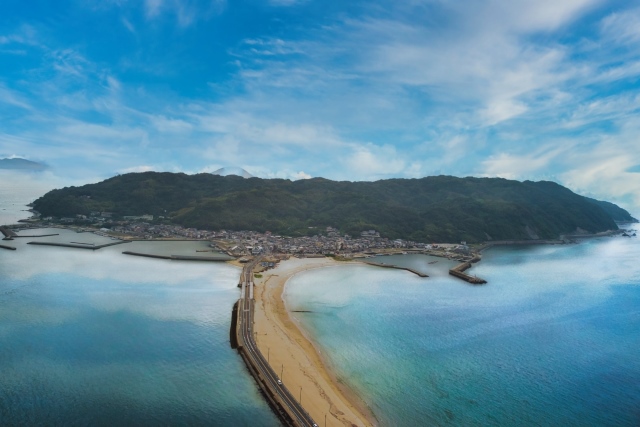Introduction to Instagram-Worthy Photos in Fukuoka Prefecture
Hakata is known for its popular attractions among visitors to Japan, such as the food stalls in Nakasu, Kyushu’s largest entertainment districts, Nakasu and Tenjin. Additionally, it is blessed with historical attractions like Dazaifu Tenmangu Shrine, Hakata Gion Yamakasa, and Mojiko Retro, providing rich cultural experiences for visitors. In the suburbs, places like Uminonakamichi allow easy access to scenic natural landscapes, which is one of Fukuoka Prefecture’s appeals.
Dazaifu Tenmangu Shrine
Dedicated to Sugawara no Michizane, a renowned scholar, politician, and poet of the Heian period, Dazaifu Tenmangu Shrine is one of the largest shrines in Kyushu and the central hub of approximately 12,000 Tenmangu shrines nationwide. Michizane was demoted to Dazaifu in Kyushu due to a conspiracy and died there. The shrine was established at the place where the ox carrying his remains stopped and lay down. Dazaifu Tenmangu is believed to bring blessings for academic success, protection from evil, and family safety. The shrine grounds feature about 6,000 plum trees related to Michizane, offering beautiful scenery throughout the seasons.
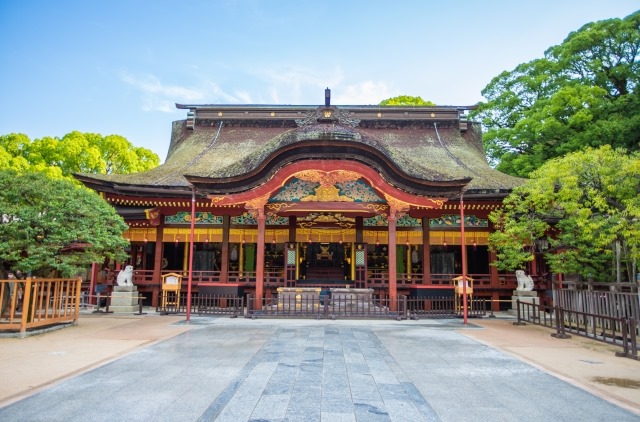
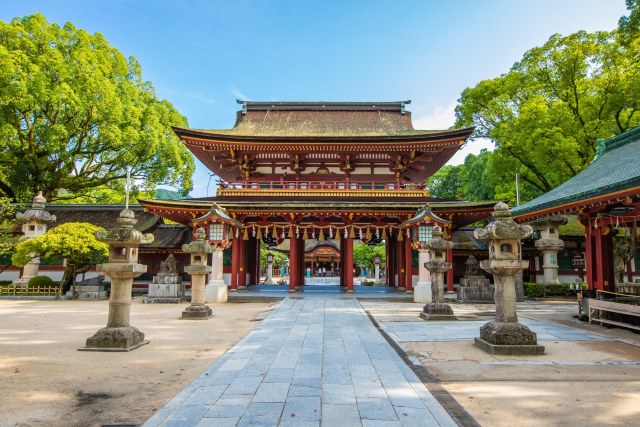
Instagram Worthiness:★★★★★
Photography Opportunity: All seasons
Location Information: ▶Map, Hours, Routes
Transportation Information: 4-minute walk from Dazaifu Station
Mojiko Retro
Mojiko in Kitakyushu is known for its prosperity in foreign trade during the Meiji and Taisho periods, with many historic Western-style buildings remaining. Major attractions include JR Mojiko Station, known as Mojiko Station built in 1914, the former Moji Customs Office, the former Mitsui Club, the former Osaka Shosen, and the Kanmon Straits Museum.
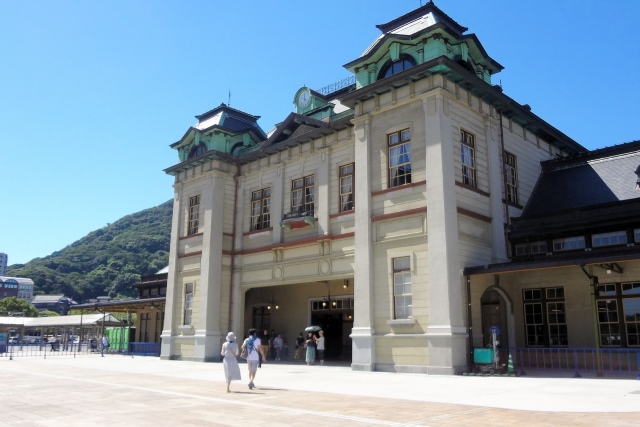
Instagram Worthiness:★★★★★
Photography Opportunity: All seasons
Location Information: ▶Map, Hours, Routes
Transportation Information: 4-minute walk from Mojiko Station
Shiraito Falls
Located halfway up Mt. Hagane, Shiraito Falls has a drop of about 24 meters. Visitors can enjoy fishing for yamame trout and nagashi somen (flowing noodles). Particularly from mid-June to early July, around 5,000 clusters of hydrangeas, totaling 100,000 blooms, reach their peak season.
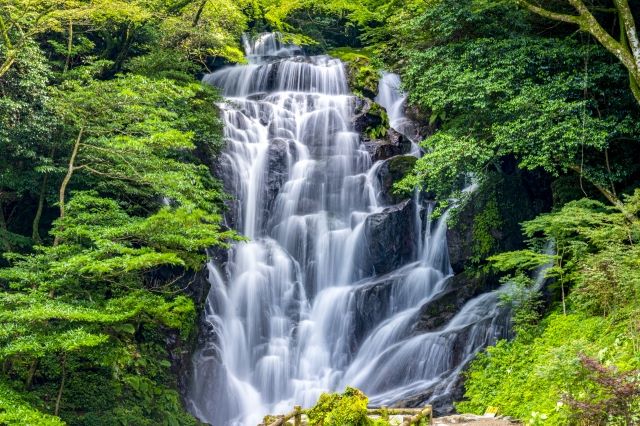
Instagram Worthiness:★★★★★
Photography Opportunity: All seasons
Location Information: ▶Map, Hours, Routes
Transportation Information: 28-minute walk from Chikuzen-Maebaru Station
Itoshima
Itoshima City is conveniently accessible from central Fukuoka (Tenjin, Hakata, Fukuoka Airport) by train in about 30-40 minutes and is popular as a residential area and leisure spot. It features a beautiful coastline facing the Genkai Sea and the mountains of the Sefuri range to the south. Between these are the gentle plains known as the Itoshima Plain, offering many scenic spots. The Meoto Iwa (Wedded Rocks) seen from the white torii gate at Sakurai Futamigaura is a recommended photo spot for social media.
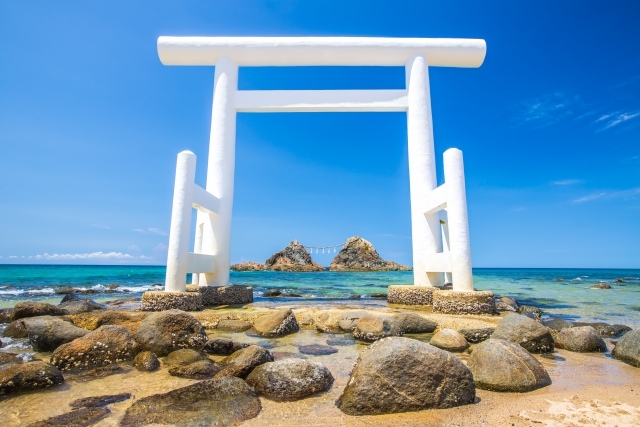
Instagram Worthiness:★★★★★
Photography Opportunity: All seasons
Location Information: ▶Map, Hours, Routes
Transportation Information: 25-minute bus ride from Imajuku Station
Nakasu Yatai Street
The food stalls in Fukuoka City are divided into three areas: Tenjin, Nakasu, and Nagahama, with over 100 stalls in operation. These food stalls started after World War II in 1945. Amid economic downturns and food shortages, stalls began opening on the streets to support people’s lives. The Nakasu area, in particular, has a famous yatai street near the shopping mall “Canal City Hakata.”
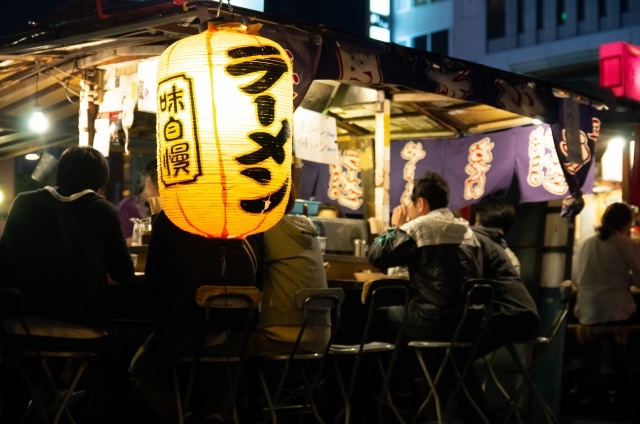
Instagram Worthiness:★★★★★
Photography Opportunity: All seasons
Location Information: ▶Map, Hours, Routes
Transportation Information: 5-minute walk from Kushida Shrine Station
Ohori Park
The ruins of Fukuoka Castle, one of the largest castles in Kyushu, were built over seven years starting in 1601. The castle was constructed by Nagamasa Kuroda after he became the lord of Chikuzen with 520,000 koku of rice for his war achievements at the Battle of Sekigahara. Although many buildings were lost after the Meiji Restoration, the castle site is now developed as Maizuru Park and Ohori Park, popular for cherry blossoms in spring and autumn leaves in fall. Ohori Park, utilizing the outer moat of Fukuoka Castle, has a pond with a circumference of about 2 km. Many people enjoy jogging and walking here, and boat rentals are available except in winter.
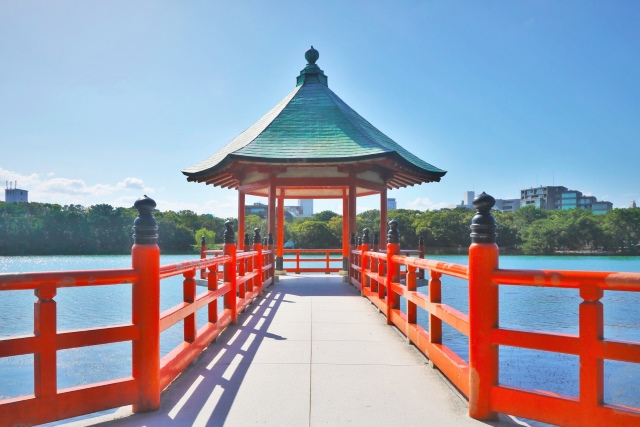
Instagram Worthiness:★★★★★
Photography Opportunity: All seasons
Location Information: ▶Map, Hours, Routes
Transportation Information: 3-minute walk from Ohori Park Station
Hakata’s Entertainment District
The Tenjin and Nakasu areas are among the largest entertainment districts in Kyushu. This area is lined with numerous fashion buildings, historic department stores, drugstores, and electronics retailers. The Nakasu area also features many attractions for tourists from within and outside the prefecture, such as Hakataza Theater, Fukuoka Asian Art Museum, Yanagibashi Rengo Market, Hakata Traditional Craft Center, Hakata Riverain, and ACROS Fukuoka.
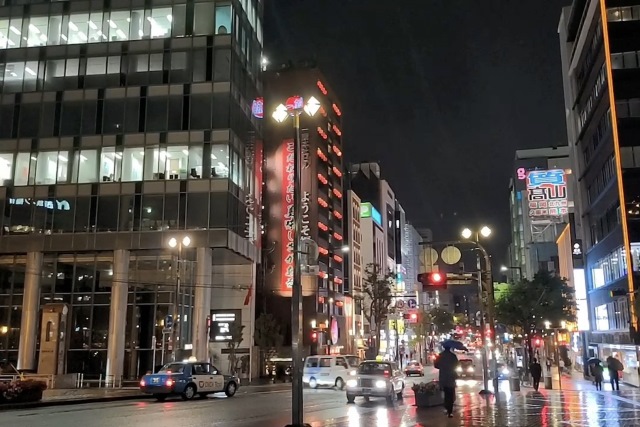
Instagram Worthiness:★★★★★
Photography Opportunity: All seasons
Location Information: ▶Map, Hours, Routes
Transportation Information: Around Tenjin Station
Hakata Gion Yamakasa
Hakata Gion Yamakasa, with over 770 years of history, is a traditional summer festival held in Fukuoka City from July 1 to 15 each year. The festival originated in the Kamakura period when a priest sprinkled holy water to ward off plagues. The centerpiece of the festival is the sacred rituals at Kushida Shrine, with elaborately crafted decorative floats displayed throughout Fukuoka City. These floats offer enjoyable photo opportunities for visitors. The festival’s climax is a dynamic event where men carry the floats and parade through the city. This parade attracts over 3 million tourists and is known as Hakata’s representative summer festival.
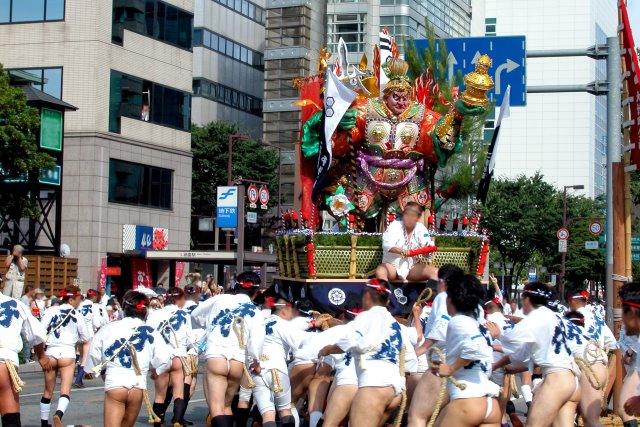
Instagram Worthiness:★★★★★
Photography Opportunity: All seasons
Location Information: ▶Map, Hours, Routes
Transportation Information: 2-minute walk from Kushida Shrine Station
Uminonakamichi
Uminonakamichi is a vast sandbank about 8 kilometers long and up to 2.5 kilometers wide, connecting Shikanoshima and Kyushu. It faces the Genkai Sea to the north and Hakata Bay to the south, making it a popular resort area within Fukuoka City.
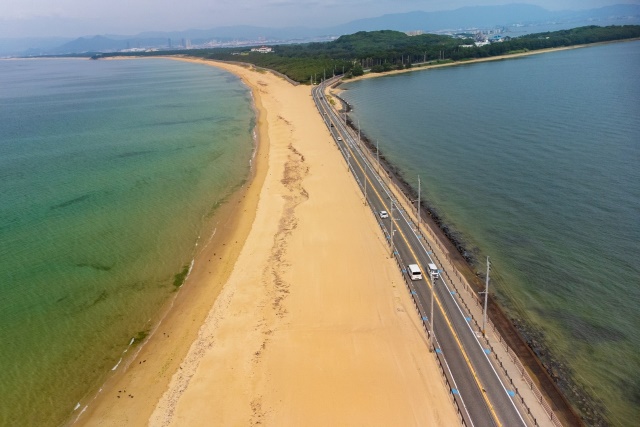
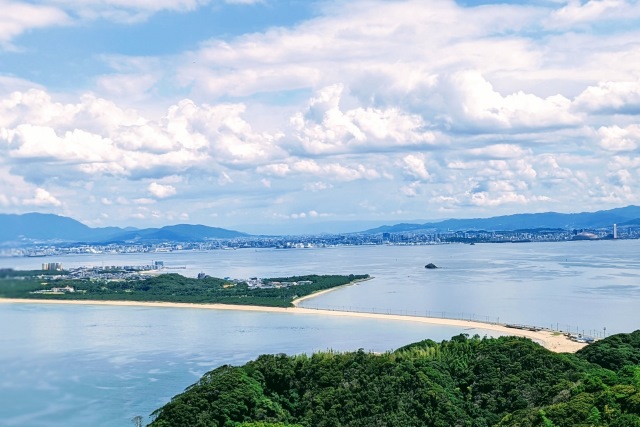
Instagram Worthiness:★★★★★
Photography Opportunity: All seasons
Location Information: ▶Map, Hours, Routes
Transportation Information: 25-minute bus ride from Tenjin Station
Shikanoshima
Shikanoshima is connected to the mainland via the “Uminonakamichi” sandbank, making it easily accessible by car or bus. It’s about a 40-minute bus ride from Tenjin in central Fukuoka City or a 30-minute boat ride from Hakata Port. Historically significant, Shikanoshima was a key base for maritime trade in ancient Japan. The island’s circumference is about 12 km, and the flat roads make it ideal for exploring by rental bicycle.
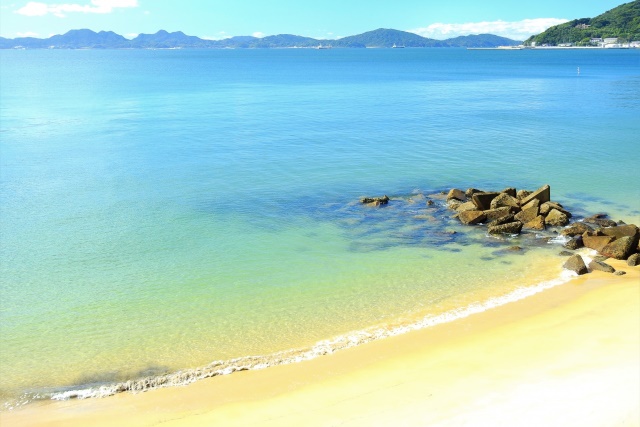
Instagram Worthiness:★★★★★
Photography Opportunity: All seasons
Location Information: ▶Map, Hours, Routes
Transportation Information: 17-minute bus ride from Nishitetsu Shingū Station
Shikaumi Shrine
Shikaumi Shrine is a popular power spot known as the “head shrine of sea gods.” It was originally established by combining three different gods who protect the sea’s bottom, middle, and surface. The shrine offers blessings for safe maritime travel, abundant fishing, women’s health, and household safety.
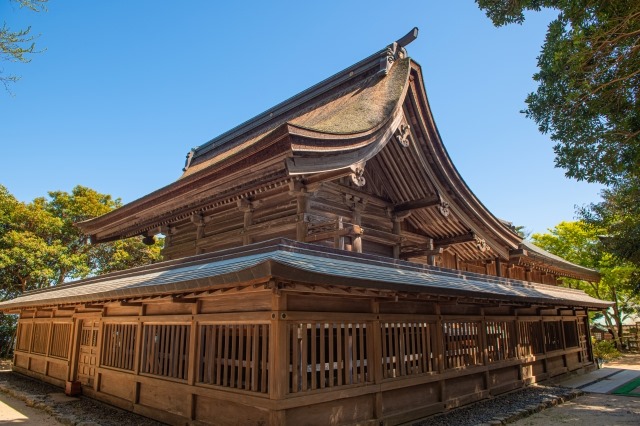
Instagram Worthiness:★★★★★
Photography Opportunity: All seasons
Location Information: ▶Map, Hours, Routes
Transportation Information: 11-minute bus ride from Nishitetsu Shingū Station
Uminonakamichi Seaside Park
This park spans about 350 hectares and stretches about 6 kilometers from east to west. Visitors can enjoy seasonal flowers and interact with animals like squirrel monkeys, capybaras, and kangaroos in the “Animal Forest.”
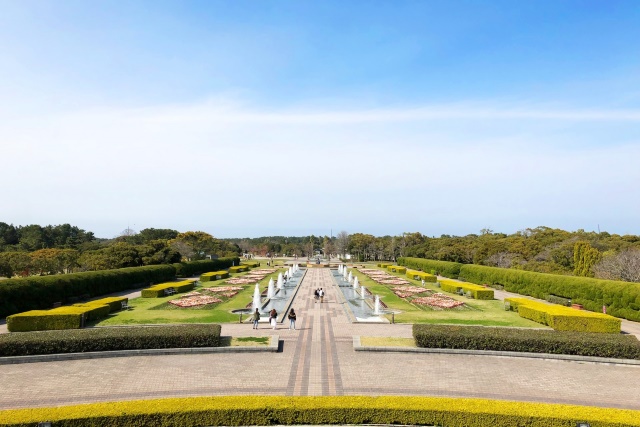
Instagram Worthiness:★★★★★
Photography Opportunity: All seasons
Location Information: ▶Map, Hours, Routes
Transportation Information: 1-minute walk from Uminonakamichi Station
Flower Museum
The Flower Museum in Uminonakamichi Seaside Park is like an “open-air flower art museum.” With ten different areas, you can enjoy colorful flowers in any season, making it a perfect spot for flower lovers. It’s also an excellent spot for taking photos for social media.
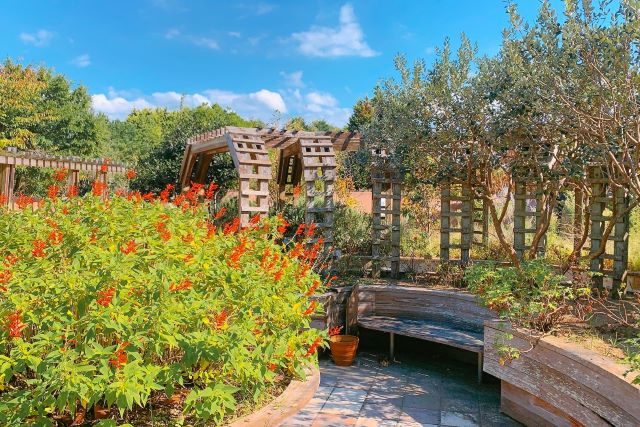
Instagram Worthiness:★★★★★
Photography Opportunity: All seasons
Location Information: ▶Map, Hours, Routes
Transportation Information: 14-minute walk from Uminonakamichi Station
